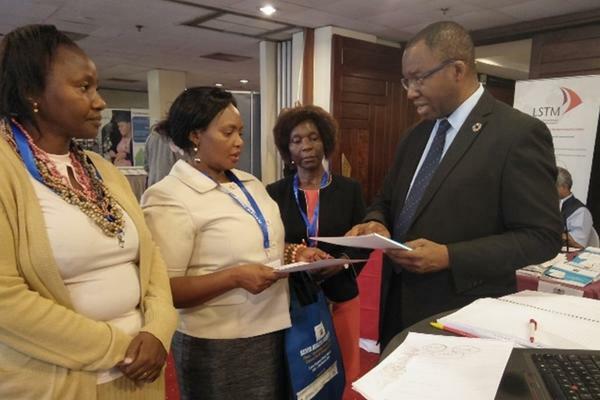In addition to embedded implementation research, our researchers work extensively in fundamental research around maternal and neonatal morbidity to close knowledge gap around the type and extent of ill-health that women suffer during and after pregnancy, and morbidity issues affecting children in their first days of life. Our team actively work to understand patterns and underlying causes of burden of disease in Kenya, and contribute to the design, testing and validation of frameworks and tools to measure mortality and morbidity.
Examples of our fundamental research include:
- Maternal Morbidity Study – assessing burden of disease during and after pregnancy
- Stillbirth Classification Study – assessing cause of still birth and factors associated with stillbirth
- An assessment of the social return on investment of Emergency Obstetric Care training

We believe in translational research: where evidence is applied to inform policy. We communicate results so that they are understandable for wide audiences and useful for decision making.
We utilise our close collaborations to inform the maternal, newborn and child health policy agenda globally by:
- Actively disseminating evidence generated through our research to policy makers, donors and relevant national and international institutions
- Publishing in high impact journals
- Using our networks and relationships to influence and lead international debate and champion the use of evidence in this field.
Measuring Maternal Morbidity
Non-life threatening maternal morbidity is a relatively new concept internationally. CMNH has conducted the first study to comprehensively measure the burden of non-acute maternal morbidity during and after pregnancy. We developed and presented a standardised tool and study protocol to measure maternal morbidity at primary, secondary and tertiary healthcare levels. This was then used to assess the physical, psychological, and social components of ill-health in combination with objective clinical and laboratory measurements in India, Pakistan, Malawi and Kenya.
The study highlights for the first time a significant burden of ill-health during and after pregnancy that has largely been ‘hidden’ and/or underestimated.
- Almost 3 out of 4 women had ≥1 symptoms (73.5%), abnormalities on clinical examination (71.3%) or laboratory investigation (73.5%).
- In total, 9.0% of women had an identified infectious disease; 32.5% had signs of early infection.
- Overall, 47.9% of women were anaemic, 11.5% were diagnosed with other medical or obstetric morbidity, 25.1% of women reported psychological morbidity and 36.6% reported social morbidity (domestic violence and/or substance misuse).
The findings from this study are now being used to adapt the content and quality of maternal care to the specific health needs of women, and to assess the effectiveness (or not) of interventions provided to address these needs.
Examples of research conducted in Kenya which has been published in peer review journals include:
McCauley M, Madaj B, White SA, Dickinson F, Bar-Zeev S, Aminu M, Godia P, Mittal P, Zafar S, van den Broek N. The burden of physical, psychological, and social ill-health during and after pregnancy among women in India, Pakistan, Kenya, and Malawi. BMJ Global Health
Smith H, Ameh CA, Godia P, et al. Implementing maternal death surveillance and response in Kenya: incremental progress and lessons learned. Glob Health Sci Pract. 2017;5(3).
Smith H, Ameh C, Roos, N, Mathai, M, van den Broek N: Implementing maternal death surveillance and response: a review of lessons from country case studies. BMC Pregnancy and Childbirth (2017) 17:233 DOI 10.1186/s12884-017-1405-6
Aminu M, Bar-Zeev S and van den Broek N (2017) 'Cause of and factors associated with stillbirth: a systematic review of classification systems', Acta Obstetricia et Gynecologica Scandinavica, vol. 96, no. 2017, pp. 519-528. doi: 10.1111/aogs.13126 Available at: http://onlinelibrary.wiley.com/doi/10.1111/aogs.13126/full
Pyone T, Smith H and van den Broek N (2017) 'Implementation of free maternity services policy and its implication on health system governance in Kenya', BMJ Global Health, vol. 2, no. 4, pp. e00024. doi: 10.1136/bmjgh-2016-00024 Available at: http://gh.bmj.com/content/2/4/e000249
Aminu M, Unkels R, Mdegela M, Utz B, Adaji S and van den Broek N (2014) 'Causes of and factors associated with stillbirth in low- and middle-income countries: a systematic literature review', BJOG: An International Journal of Obstetrics & Gynaecology, vol. 121, no. S4, pp. 141-53. doi: 10.1111/1471-0528.12995 Available at: http://onlinelibrary.wiley.com/doi/10.1111/1471-0528.12995/full